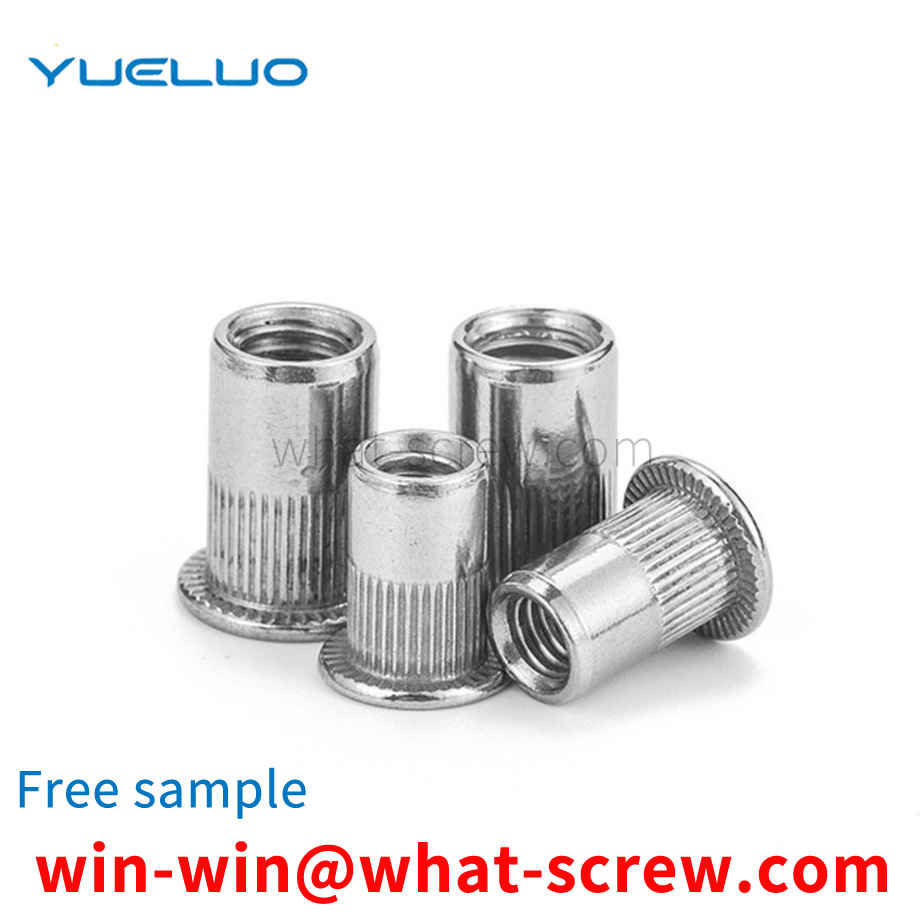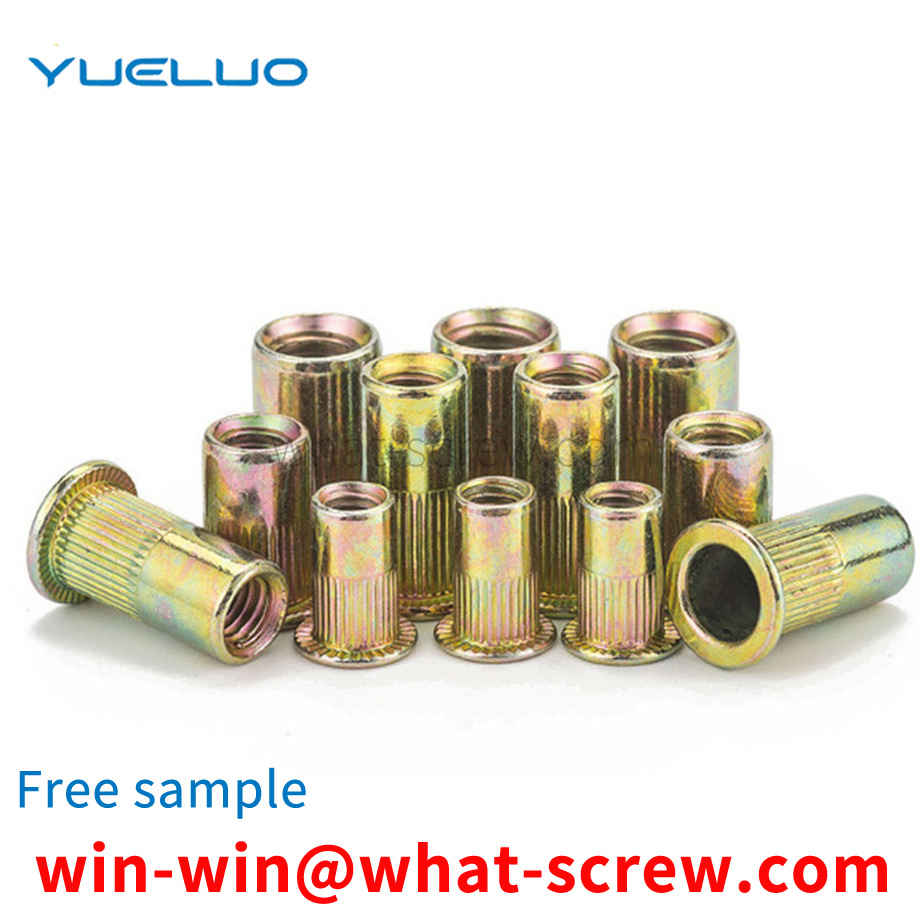The existing method of tightening large screws is generally 1. After the nut is screwed to the connected piece by hammering + nut angle method, use a casing to connect the lever arm of the wrench, or use a free hammer to hammer the plate handle, Rotate the nut an additional angle to obtain the required preload. This is not only a primitive and labor-intensive fastening method, but also has great limitations, such as limited space, or the screw itself is a rotating shaft and so on, it is difficult to use this method.
Material and process requirements The self-tapping locking screw should be made of high-quality carburized steel cold heading, generally no larger than M12. The finished material should be drawn with a high total reduction rate before cold heading, so that the cold heading must be spheroidized. Annealing, in order to enhance the surface hardness and the toughness of the core, most of them are made of medium and low carbon steel. The chemical composition of the material in the standard is only for guidance. The C content is 0.13%~0.37%, the Mn content is 0.64%~1.71%, and the B content can reach 0.005%. The elements of S, P, Mn and Si in the commonly used steel are generally lower than those of the ordinary bolt steel of the same grade. And the surface quality of the material is strictly controlled to reduce deformation resistance and prevent deformation and cracking. Commonly used grades are 20Mn, 15MnB, SWRCH22A, 1022A and medium carbon steel, medium carbon alloy steel SWRCH35K, SCM435, SCR435, etc. Self-tapping locking screws are threads with an arc-shaped triangular cross-section, so the formulation of cold heading and wire rolling processes, as well as the design and manufacture of cold heading dies and special rolling plates are very important. Self-tapping locking screws require a high-hard surface for cutting and extruding capabilities due to the need for self-tapping low carbon steel. At the same time, there must be sufficient core strength and toughness to prevent twisting and breaking during work. The heat treatment process of this type of screw belongs to shallow carburizing. Regardless of whether it is made of low carbon steel or medium carbon or medium carbon alloy steel, its core hardness must be guaranteed to be within the range of 28~38HRC (9.8 grade) 33~39HRC (10.9 grade) and not less than the minimum tensile load of 930MPa (9.8 grade), 1040MPa (grade 10.9), depending on the material, the minimum tempering temperature is 420℃. In order to ensure that the self-tapping locking screw can be smoothly screwed into the prefabricated cylindrical hole, the end of the screw should be hardened by high-frequency quenching to ensure that at least one to three thread teeth are hardened, and the minimum surface hardness is 45HRC.
Commonly used are R-type rivets, fan rivets, blind rivets (blind rivets), tree rivets, semi-circular head, flat head, semi-hollow rivets, solid rivets, countersunk head rivets, blind rivets, hollow rivets, these are usually used Self-deformation connection is riveted. Generally less than 8 mm with cold riveting, larger than this size with hot riveting. But there are exceptions. For example, the nameplate on some locks is riveted by the interference between the rivet and the lock body hole.
The square nut is a fastener that needs to be used in the installation of the cable tray. In the prior art, the square nut 1 is pressed by the elastic force of the spring 2 below it and the opening of the C-shaped steel 3 (as shown in Figure 1, Figure 2), in the absence of external force, through the interaction of pressure and static friction, the C-shaped steel 3 will not move vertically or horizontally, which can facilitate engineering installation. The advantage of this installation method is that it can slide anywhere on the C-shaped steel 3, but the disadvantage is that it occupies the bottom space of the C-shaped steel 3, and the spring 2 will interfere with the installation hole of the square nut I, which affects the installation.
screw suitable for a variety of tools is a single-structure threaded part, including a screw body and a screw head. The outer surface of the screw body is processed with an external thread 1, and the outer side of the screw head is formed by six screw heads. Prismatic, the top surface of each edge of the outer hexagonal prism is a boss, between each boss is an end face groove 4, and the middle of each boss is provided with an end face hole 3; the inner side of the screw head is formed by six screw heads. The side surface 5 forms an inner hexagonal prism hole, and the bottom of the inner hexagonal prism hole is processed with a cross groove 13 .
We have many years of experience in the production and sales of screws, nuts, flat washers, etc. The main products are: recurve bow accessories, furniture embedded nuts, pressure riveting parts mother columns, umbrella-shaped dome head bolts and other products, we can provide you with suitable products for you fastener solutions.



















 Service Hotline
Service Hotline




